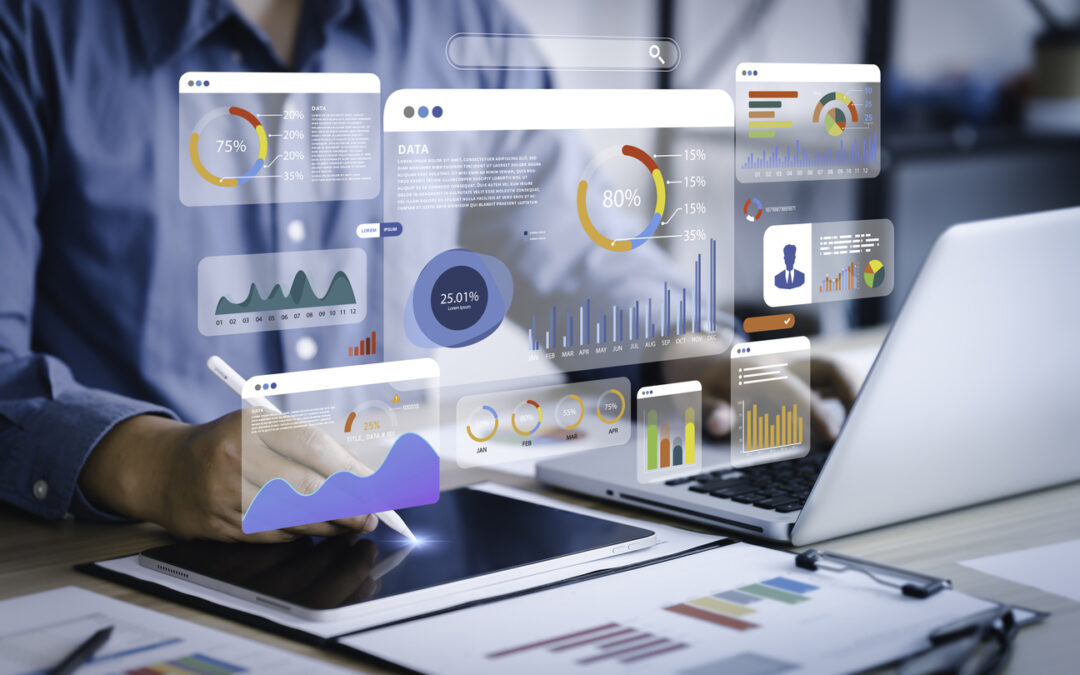Whatever kind of business you run, there are others out there providing the same service or product. To outperform them, you need to take advantage of the information you have at hand. Through a variety of sources, you’ll better understand your audience and be able to target their specific needs. Big data provides small business owners with everything they need to reach their consumers.
Clear Definition of Big Data and Business Intelligence (BI)
To effectively use big data, it’s essential to understand what it is and how it works in conjunction with business intelligence (BI).
- Big data. Refers to large volumes of structured and unstructured data generated from various sources, such as customer transactions, social media, website activity, and more. It’s characterized by its volume, variety, and velocity, making traditional data processing methods insufficient to analyze it effectively.
- Business intelligence (BI). Encompasses tools, strategies, and software that analyze big data and transform it into actionable insights. BI helps businesses make informed decisions, optimize processes, and achieve their goals.
When combined, big data and BI allow businesses to identify trends, predict outcomes, and gain a deeper understanding of their customers and operations.
How do you get started?
Most things that you look at – customer transactions, social media, your website – provide you with big data. With the amount of information that comes in, it can be confusing without a reason for looking at it in mind. Before analyzing anything, you and your team should have established an outcome for the data and have predictions, Forbes explained. This allows you to see how much you actually know about your consumers and your company. If you don’t have any goals, you’re going to have a lot of information you don’t know what to do with.
“We’ll see people do a ton of data analysis and everyone in the room has a different interpretation of the results,” Ashley Stirrup, chief marketing officer at Talend, told the source. “That’s because they haven’t thought it through before.”
Another issue you’ll face while analyzing your data is not having it all in one place. You won’t have a complete picture of your company, consumers or the problem if you have the information scattered throughout the business, according to VentureBeat. You can’t fully leverage the data in that case. Once you’ve collected everything into one place, you can categorize it into groups that make sense.
Practical Steps to Start Using Big Data
Starting with big data may feel overwhelming, but breaking it into manageable steps can simplify the process:
- Define business goals. Identify specific objectives for your data analysis, such as improving customer retention, increasing sales, or streamlining operations.
- Identify data sources. Determine where your data is coming from, such as customer interactions, website analytics, CRM systems, or social media platforms.
- Choose the right tools. Invest in BI software that fits your business needs and budget, such as Google Analytics, Tableau, or Power BI.
- Centralize your data. Consolidate data from different sources into a single platform to avoid fragmented information and create a comprehensive view.
- Train your team. Ensure employees understand how to use data tools effectively and can interpret insights to make data-driven decisions.
- Start small. Focus on a few key metrics or projects at first, and gradually expand your data analysis efforts as you gain confidence.
What Can You do With Big Data?
The information you gather means nothing if you don’t have the proper system to analyze it for you. Business intelligence software can scan through all the data and detect patterns that will help you better serve your clientele. While it may put a dent in your business banking account in the beginning, it will be worth it once you see what the program offers. There are endless ways that you can take advantage of the insight BI and analytics provide.
You can’t sell your product or service without marketing, and the steps you take will mean nothing if you don’t reach the right people. Big data and analytics help businesses retain customers while attracting new ones. A study by Forbes Insights and Turn showed that 61% of marketing executives have noticed an increase in return on investment with data-driven ad campaigns. The information collected from a variety of sources allows companies to create ads and articles that their audiences will want to read or view. Using analytics, they can see which type of content—videos, articles, graphics—their site’s visitors click on most, and then produce more of that style to appeal to a larger audience.
Big data also gives companies the ability to see how they’re performing. Any information can show them where they’re doing well and in which areas they need to improve. Maybe it’s changing the content format or it could working on customer service. Whatever the issues are, big data and BI can help businesses fix them.
Addressing Data Overload
Big data offers an abundance of information, but it’s easy to become overwhelmed without a strategy for managing it. Here’s how to avoid data overload:
- Set priorities. Focus on the most relevant metrics that align with your business goals. For instance, prioritize customer lifetime value over less actionable metrics.
- Use dashboards. BI dashboards provide a visual representation of your data, making it easier to monitor key performance indicators (KPIs) at a glance.
- Filter and segment. Organize data into categories or groups to quickly access the most pertinent insights without sifting through irrelevant information.
- Automate reporting. Set up automated reports to regularly receive updated insights, reducing the time spent manually extracting and analyzing data.
- Review and refine. Periodically assess your data collection and analysis methods to ensure they remain effective as your business evolves.
Unlock the Power of Big Data and BI for Your Business Success
Big data and business intelligence are no longer reserved for large corporations—they are essential tools for small businesses aiming to succeed in today’s competitive market. By understanding the basics of big data, following practical steps to start using it, and managing data effectively, your business can unlock its full potential.
For businesses to be able to reach their audiences successfully, they need to utilize the information big data and BI can provide. They can help companies create and narrow marketing strategies that will truly hit their desired targets without significantly setting back the financial plan.


